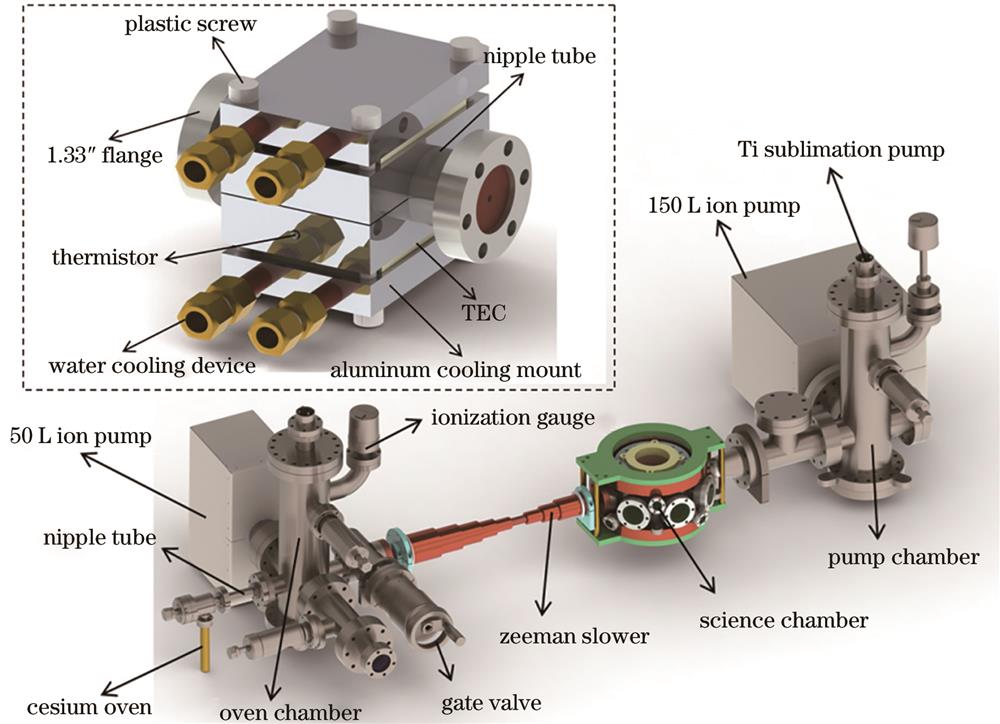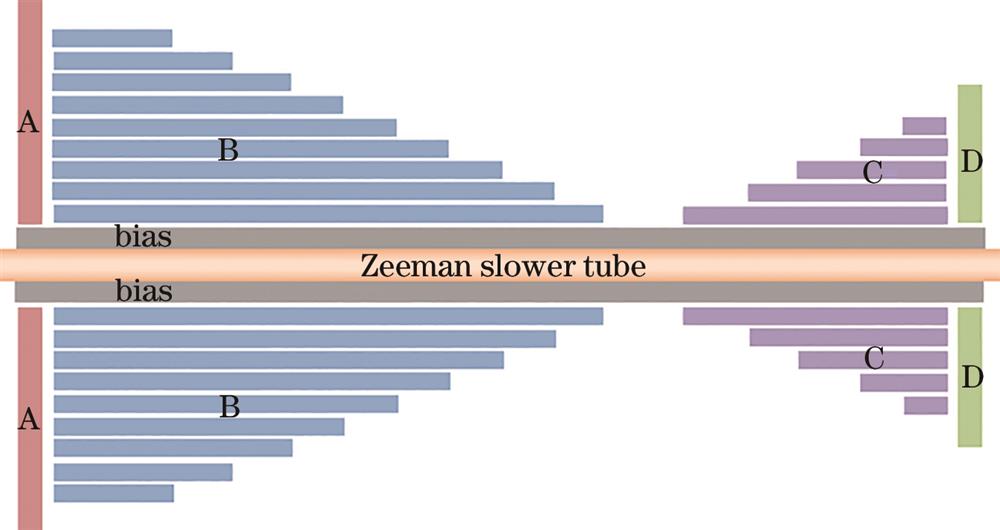Yuqing Li, Huiying Du, Yunfei Wang, Jizhou Wu, Wenliang Liu, Peng Li, Yongming Fu, Jie Ma, Liantuan Xiao, Suotang Jia. [J]. Laser & Optoelectronics Progress, 2023, 60(17): 1736001
Search by keywords or author
- Laser & Optoelectronics Progress
- Vol. 60, Issue 17, 1736001 (2023)

Fig. 1. Schematic of the vacuum apparatus (the Cs atomic oven is heated up to 60 ℃ to provide a high flux of atoms. A Zeeman slower is installed between the gate valve connected the oven chamber and the science chamber. Two ion pumps with the speeds of 50 L/s and 150 L/s are connected with the oven chamber and the science chamber, respectively. In addition, each of the oven chamber and the science chamber has a Ti sublimation pump. The designed cold nipple is enlarged in the dashed box. The cold nipple consists of a 60 mm long tube connected with two 1.33″ flanges, the temperature control unit, and the water cooling device. The temperature control unit includes two TECs, a thermistor, the temperature controller and the aluminum mount. The plastic screws are used to prevent the heat conduction)

Fig. 2. Construction of a Zeeman slower for Cs atoms (the Zeeman slower consists of a slower tube with 8 mm inner diameter and five segments of magnetic field coils, which are manufactured by using 2 mm square copper wires. The two layers of bias coils at the bottom create an uniform magnetic field of 45 G at a current of 3.4 A and each layer has 180 turns. The structurally tapered coils are wrapped on the surface of the bias coils and have the optimized currents of 1.0, 1.2, -1.2, and -3 A for the A, B, C, and D segments, respectively)
Fig. 3. Vacuum pressure in the oven chamber as a function of the controlled temperature for the nipple (the red line is from theoretical calculation)
Fig. 4. A comparison between the simulated (red line) and measured (black dots) variations of the axial magnetic field in the Zeeman slower tube with the position by using the parameters shown in Fig. 2. A theoretical calculation (blue line) is presented with the efficiency of Zeeman slower η = 0.85
Fig. 5. Dependence of the number of Cs atoms in MOT on the detuning of slowing laser (each point is an average of five measurements, solid line is the Gaussian fit for the guide to the eye)

Set citation alerts for the article
Please enter your email address



